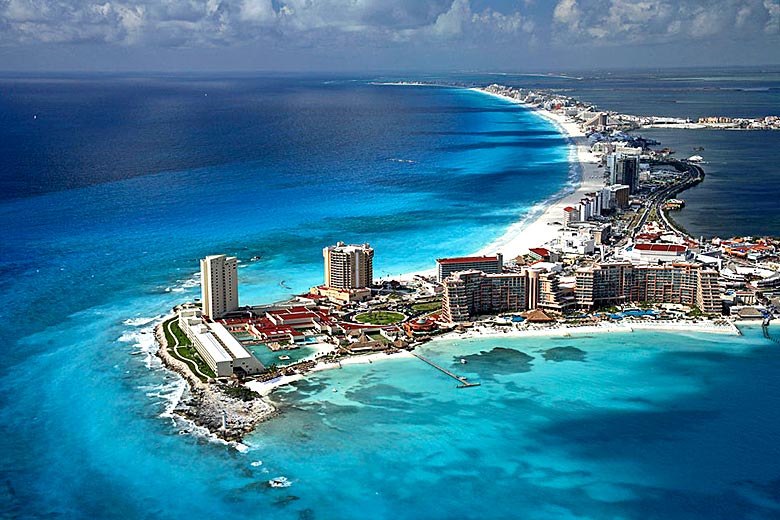- Explore latest sale offers on holidays in 2024/2025
- Filter deals by continent, star rating & holiday type
- Including Dubai, Caribbean, North America, Asia & Pacific
Seychelles weather by month
Check out the Seychelles weather averages by month. Compare detailed monthly climate statistics including temperature, rainfall and sunshine figures.
| Jan | Feb | Mar | Apr | May | Jun | Jul | Aug | Sep | Oct | Nov | Dec | |
|---|---|---|---|---|---|---|---|---|---|---|---|---|
| Maximum daytime temperature °F | ||||||||||||
| Hours of sunshine (daily) | ||||||||||||
| Days with some rainfall | ||||||||||||
| Sea temperature °F |
More about the Seychelles
Seychelles by month
Jan Feb Mar Apr May Jun Jul Aug Sep Oct Nov Dec
Recommended for the Seychelles
The climate guide for Seychelles (Mahe) shows long term monthly weather averages processed from data supplied by CRU (University of East Anglia), the Met Office & the Netherlands Meteorological Institute. Find out more about our data sources.
Top Seychelles destinations
Below are average maximum temperatures at popular countries, regions and places in the Seychelles for next month - October. Select a destination to see the climate guide for all months of the year.
All Seychelles destinations
Metric (°C) | Imperial (°F)
Seychelles climate overview
The Seychelles is an archipelago of islands spread out over the western Indian Ocean just south of the equator. It is noted for its steeply sloping mountains, lush green vegetation and spectacular giant granite boulders that tower over many of its beaches.
The islands of Mahe, Praslin and La Digue are those most frequently visited by holidaymakers. Travel to most of the other islands is also possible but in some cases only by sea, while the island of Aldabra is a restricted conservation area and can only be visited with a permit.
The Seychelles has a tropical climate with rainfall and heat and humidity in all months. It is generally warm with temperatures rarely falling below 23°C (73°F) at any time of the year.
The wettest time coincides with the Southern Hemisphere summer that runs from November to March. It is marked by the onset of the north-west monsoon and light westerly winds. Seychelles lies outside the cyclone belt however seas can become rough when cyclones pass to the south of the islands.
Rainfall reaches its peak in January when torrential afternoon downfalls are likely. However there are still long periods of sunshine at this time of year and in fact there can also be days with no rain at all.
By April the rains subside significantly as the north-west monsoon weakens. This is the time of year when temperatures are at their highest, and heat and humidity is very high, however seas are calm and clear.
Then in May the winds start to blow from the opposite direction as the south-east monsoon pick-ups. This heralds the approach of the driest and sunniest time of year however it is also the windiest.
By August the winds have reached their peak, and at south and east facing beaches the sea can sometimes be rough. At such times boat journeys between islands can be quite uncomfortable.
By the end of September the trade winds weaken as rain approaches once more from the west. However in October, as with April, there is another lull in the weather, and particularly the wind, before the onset of the north-west monsoon once again.
More about the Seychelles
Compare Seychelles with the USA
Below the Seychelles chart shows average maximum daytime temperature for Seychelles (Mahe) and the USA (Washington).
Maximum daytime temperature (°F)
Metric (°C) | Imperial (°F)
Compare more Seychelles weather >>
Be inspired
Get your weekly fix of holiday inspiration from some of the world's best travel writers plus save on your next trip with the latest exclusive offers
We promise not to share your details
Related posts
Popular travel offers
Explore holidays in the sun for less
- Beach holidays
- Family holidays
- City breaks
- Summer holidays
- Winter sun holidays
- Holiday offers
- Top travel brands
- Airlines & flights
- Discount hotels
- Airport parking deals
- TUI
- Jet2holidays
- easyJet holidays
- Love Holidays
- British Airways
Airport parking
- Manchester Airport
- Stansted Airport
- Bristol Airport
- Luton Airport
- Birmingham Airport
- Edinburgh Airport
- Gatwick Airport
- Glasgow Airport
- Newcastle Airport
Airport lounges
- Manchester Airport
- Birmingham Airport
- Bristol Airport
- Edinburgh Airport
- Glasgow Airport
- Heathrow Airport
- Newcastle Airport
- Stansted Airport
- Gatwick Airport

























 Holiday deal finder
Holiday deal finder




